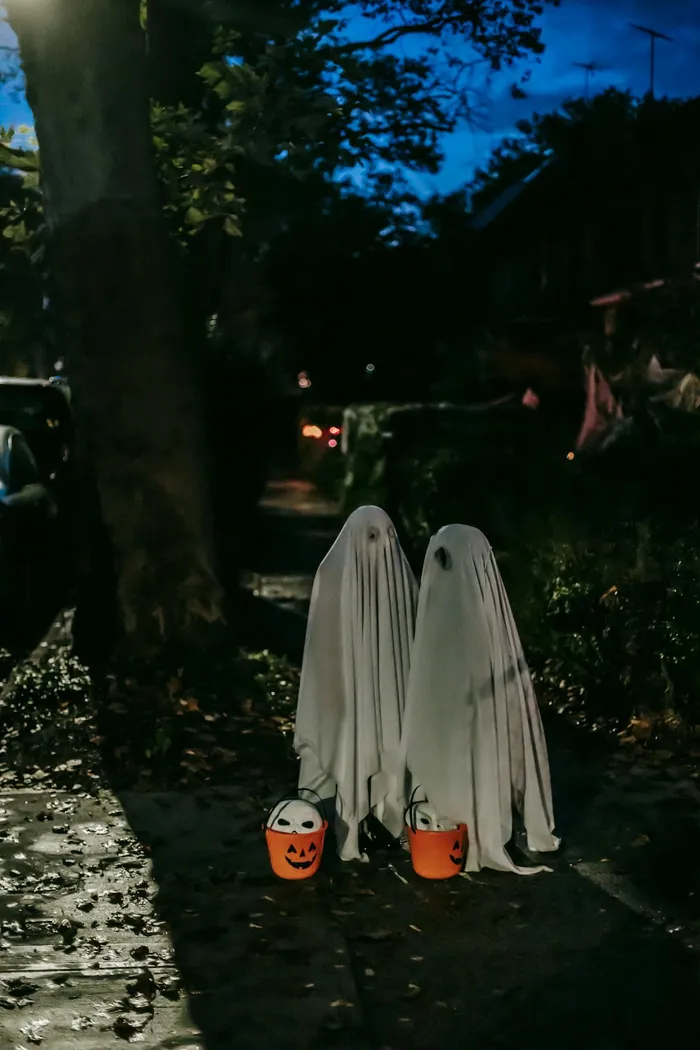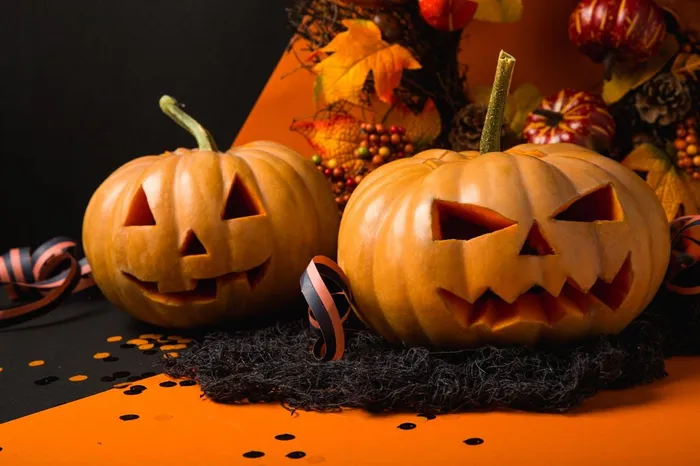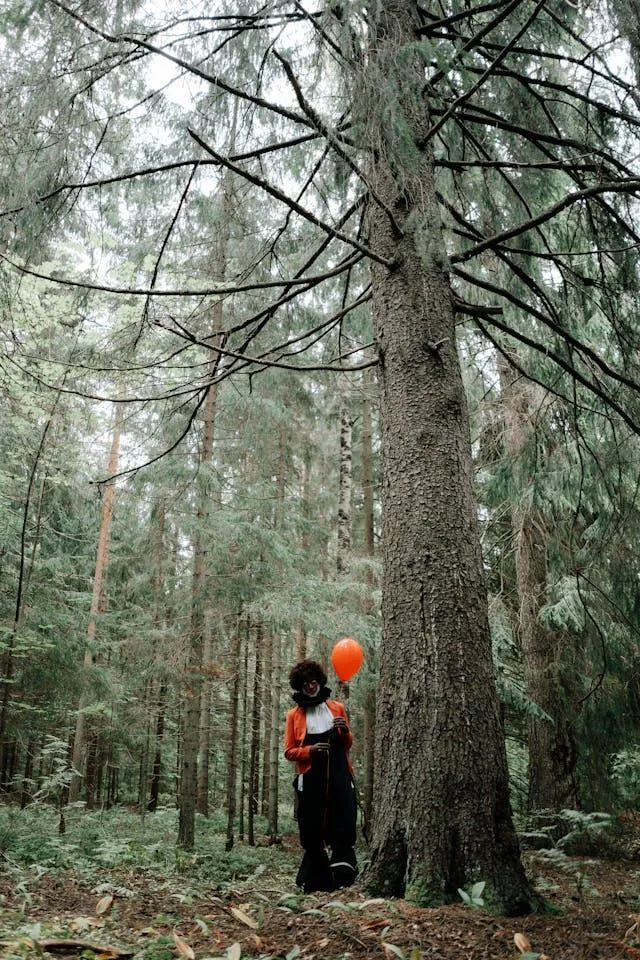Boo! The surprising psychology of why kids can't get enough of scary fun

Recreational fear gives kids a safe space to experience being scared during Halloween while knowing there’s no real danger.
Image: Charles Parker/Pexels
It's almost Halloween! That one time of year when screams, jumps, and goosebumps are all part of the fun.
But have you ever wondered why kids love being scared?
Whether it’s hiding behind the couch during a scary movie, playing “monster chase” with a parent, or running through a haunted house, fear somehow becomes part of the excitement.

What makes fear fun? As Halloween approaches, discover how children interact with fear in playful settings and learn about the surprising benefits of recreational fear in fostering emotional resilience.
Image: Toni Cuenca /Pexels
Researchers call this phenomenon “recreational fear”, the strange but wonderful way we find pleasure in being afraid.
When fear feels good
It sounds like a contradiction, right? Fear is usually something we avoid as a reaction to danger that triggers our fight, flight or freeze response.
Yet, according to a Danish study, many of us willingly seek out frightening experiences for entertainment from rollercoasters and haunted houses to horror films and spooky stories.
According to the 2024 study published in Child Psychiatry & Human Development, researchers Mihaela Taranu, Mathias Clasen, and colleagues found that 93% of children enjoy at least one type of scary-yet-fun activity.
Their work, “Recreational Fear Across Childhood”, explored how kids across different ages engage with fear and why they keep coming back for more.
Kids usually start off being curious about mildly scary things, and as they grow up, their interest in fear tends to peak during their late teenage years.
After that, it gradually fades as they get older, according to Mathias Clasen, the founder of the Recreational Fear Lab, in an interview with Neil deGrasse Tyson. So, what personality traits make someone enjoy horror?
One big factor is thrill-seeking – people who love excitement and adrenaline often enjoy horror movies. Another is openness to new experiences – those who like trying new things and exploring intellectual challenges are also more likely to enjoy scary activities.
Interestingly, fear and fun can happen at the same time. Clasen explains that there’s a unique balance between fear and enjoyment in these kinds of activities. When fear hits just the right level, not too little and not too overwhelming, it can actually bring the most pleasure.
It turns out, fear can actually help children grow. Recreational fear gives kids a safe space to experience being scared while knowing there’s no real danger.
That heart-racing thrill of being chased during a game, or the suspense of a ghost story, helps them practice managing emotions like uncertainty and excitement.
A healthy dose of fear
“Because risky, adventurous play is child-led, where children experience excitement, thrill, and fear, it fits beautifully with recreational fear; fear can sometimes also be fun,” explains Professor Helen Dodd, a child psychologist at the University of Exeter.
The Aarhus University study surveyed over 1,600 parents about their children’s favourite scary activities, covering ages one through seventeen. The results showed a fascinating pattern:
- Manage physiological arousal,
- Cope when things don’t go according to plan.
- In other words, when your child is giggling and shrieking during a game of monster tag, they’re doing more than having fun; they’re building emotional resilience.
- This kind of play helps children understand their feelings, handle surprises, and even recover from stressful situations later in life.
- School-aged children begin gravitating toward thrilling adventures like swings, slides, or theme park rides that involve speed, height, or depth.
- Teens shift toward media-based scares, horror movies, scary video games, and social media thrillers.
This natural progression shows that as children develop new skills from imagination to coordination, they find new ways to integrate fear into play. It’s their way of learning what feels safe and what’s too much, developing emotional balance along the way.
Interestingly, this pattern isn’t just human. If you’ve ever watched monkeys or young animals play, you’ll notice they often simulate risky behaviour, jumping, chasing or teasing each other.

According to researchers Mihaela Taranu, Mathias Clasen, and their team in their 2024 study titled “Recreational Fear Across Childhood,” engaging with fear can actually be beneficial for children’s emotional development.
Image: cottonbro studio/Pexels
Researchers believe this helps animals (and children) learn to regulate emotional responses to real threats.
- Toddlers and preschoolers tend to enjoy physical and imaginative fear-based play things like rough-and-tumble games, hide-and-seek, or pretending to be chased by a “monster”.
- Tweens and teens shift to more cognitive fear, like horror movies, scary video games, or creepy stories.
A constant across all ages is the love of speed, heights, and surprise rides at theme parks.
The study authors suggest that kids naturally weave fear into play that matches their developmental stage, learning emotional balance in the process.
It might seem strange that children and adults want to be scared. But psychologists say that controlled fear activates the body’s “fight or flight” system without real danger. That rush of adrenaline can feel exhilarating, even rewarding.
According to fear researcher Mathias Clasen, who has studied horror and human psychology, this reaction helps explain why haunted houses and scary movies are so popular. “Our brains evolved to learn from threat experiences. When the threat is safe and fictional, we get the same physiological thrill without the risk.”
In short, being scared for fun gives us the same high as surviving something dangerous, but in a cosy, controlled setting.
Interestingly, fear-based play might even help prevent anxiety. Anxiety disorders are among the most common emotional challenges in childhood, often affecting how kids cope with new experiences. By facing manageable fear during play, children may be learning emotional flexibility, a skill that helps them handle real stress later in life.
Think of a child learning to ride a bike. The fear of falling is real, but overcoming it builds confidence. That’s the essence of recreational fear: fear as practice, not panic.
Of course, not all fear is fun. Context and control are key. Experts emphasise that for fear to be beneficial, children must feel safe, supported, and free to stop at any time. The goal isn’t to scare them silly but to let them explore their limits in a secure environment.
According to Dodd, "Fear can sometimes also be fun but only when it's the child leading the play."